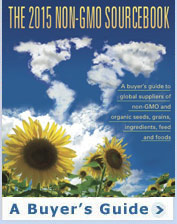King Corn raises disturbing questions about America’s top crop
New film highlights problems with America’s corn-based food supply
There’s an old adage that the best way to communicate a message is to show someone a problem rather than tell them about it. An excellent example is King Corn, a new documentary about the negative impacts of America’s corn-based food supply. Instead of preaching to the audience about the problems, the filmmakers simply show them in an almost understated, yet more powerful way.
The film’s premise is simple: two college friends, Ian Cheney and Curt Ellis, want to know how our food is produced. They discover that corn constitutes a major part of the average American diet, so they decide to grow an acre of corn in Iowa and track where the corn goes. The things they discover along the way that aren’t so appetizing: inhumane confined animal feeding operations (CAFOs), heavy use of a corn sweetener that may be linked to obesity and diabetes, and vanishing family farms, among others.
King Corn is produced by Cheney, Ellis, and filmmaker Aaron Wolf who also directs.
Understated approach
There are good examples of the show versus tell approach. Ellis puts his hand into a hole in the stomach of a live cow to demonstrate the negative health impacts of feeding corn to animals. A Brooklyn taxi driver describes how he weighed 300 pounds from drinking soft drinks containing high fructose corn syrup. An auction is held to sell off the farm and possessions of the Iowa farmer who befriends Cheney and Ellis and allows them to grow an acre of corn on his farmland.
The film follows Cheney and Ellis over an 18-month period starting in January 2004. They write to Charles Pyatt, a farmer in Greene, Iowa (population 1015), asking if they can plant an acre of corn on his farm. The two travel to Iowa and meet with Pyatt to plan their corn acre.
The film shows the month-to-month progress of Cheney and Ellis’s corn acre, from spring planting through fall harvest. The two did all the work with help from local farmers, driving tractors, spraying anhydrous ammonia fertilizer, planting seeds, spraying herbicides, and harvesting and delivering the corn to the local grain elevator.
Sympathetic to Iowa farm culture
A film about corn made by East Coast filmmakers could have easily been condescending toward Iowans, but King Corn is respectful and sympathetic to Iowa’s farmers and the challenges they face.
There are interviews with farmers and family members who express concerns about modern industrial agriculture. Rich Johnson, a farmer who runs several large farms in the area, says, “Farms are getting bigger and have to be a good size or you get squeezed out.”
The film is a coming home of sorts for both Cheney and Ellis. By an interesting coincidence, both have ancestors in Greene. Their great grandfathers, Claire Eugene Cheney and Melvin Ellis, grew up in the area and worked in agriculture. “It’s a coincidence that we became friends and that our ancestors came from this tiny Iowa town,” says Ellis.
Educational
The film provides an interesting history of how corn became king in American agriculture. It shows how US Agricultural Secretary Earl Butz under Richard Nixon changed US farm policy to one based on increased production, planting corn “fence row to fence row.”
Cheney and Ellis visit cattle ranchers and large feedlots in Colorado where cattle are raised on a corn-based diet and confined in small pens. They travel to Brooklyn and meet Trey Mendez, a taxi driver, who describes his problems with obesity and diabetes from drinking too many soft drinks. They meet university experts in grain and cattle production, such as Loren Cordain at the University of Colorado who says that a steak from a corn-fed cow contains 9 grams of saturated fat compared to the 1.5 grams from a steak of a grass-fed cow. Finally, they meet an elderly Earl Butz who remains convinced that his policy shift in the 1970s was for the best.
The film adds humor to lighten a heavy topic. After being denied access to corn refining plants that make high fructose corn syrup, the two decide to make it themselves in a kitchen. “It tastes great,” says Cheney, spitting the homemade syrup out. They both sample an ear of corn from their acre. “It’s disgusting,” says Ellis.
Raises questions
We learn along with Cheney and Ellis about the problems with America’s corn-based agriculture. “We live in a time when abundance brings too much,” says Cheney.
Ellis says, “Agriculture is growing fast food.”
The film leaves the audience to question America’s annual, massive corn harvest, which reached 92 million acres in 2007. Why are we growing so much corn? Why is it so heavily subsidized by the government? Why are we producing so much high fructose corn syrup if it increases the risk of obesity and diabetes? Why are we feeding cows and other animals corn if it makes them ill and produces less than healthy meat products for humans?
By shedding light on the questionable practices of America’s corn-based food and feed supply, King Corn could help become a catalyst for positive changes in US agriculture.
For more information about King Corn, visit www.kingcorn.net.
© Copyright The Organic & Non-GMO Report March 2008.




